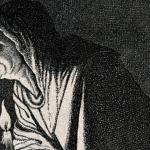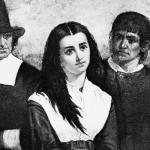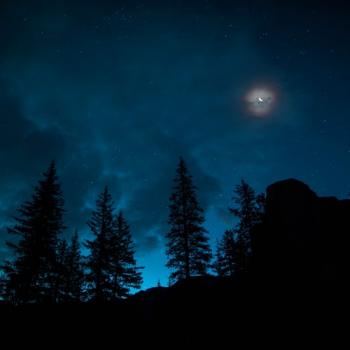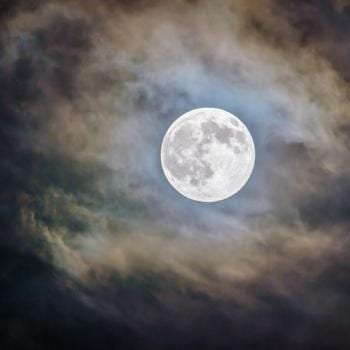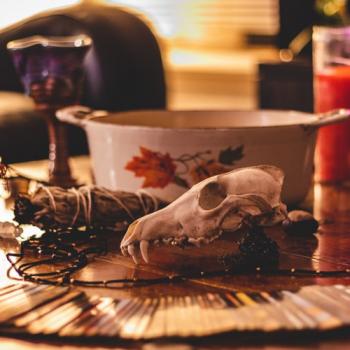In the previous section of this series we examined the term ‘Traditional Witchcraft’, considering both how it’s defined as well as its implications. I ended the article with my own definition of Traditional Witchcraft which I will repeat here:
Traditional Witchcraft is an umbrella term which covers a vast array of practices which are largely inspired by historical and folkloric accounts of Witchcraft. Furthermore, Traditional Witchcraft refers to Witchcraft practices which are non-Wiccan, although some may be influenced by or incorporate elements of Wicca. Traditional Witchcraft includes operative practices such as spellwork, divination, and herbalism. Additionally, Traditional Witchcraft may include religious elements including honoring deities, saints, spirits, faeries, familiars, and ancestors. As a whole, Traditional Witchcraft (including both operative and religious practices) are flavored by regional and cultural influences including folklore, rituals, music, etc.
Moving forward (or rather backwards), in this section we will be exploring some of the history of Traditional Witchcraft.
However, before we begin I must make two disclaimers. First, this will in no way be a comprehensive overview as that would be impossible to cover in one article alone. And so, if you find that there is something missing, I encourage you to leave a comment below! Second, for this article I will be limiting my scope to modern era Traditional Witchcraft by which I mean that which has developed since the 1950’s.
That being said, while this article will only cover a small number of events and figures, I believe that those discussed represent the most relevant to the historical development of Trad Craft.
….
Two major events happened in the year 1951. First, the Witchcraft Act of 1735 was repealed, effectively decriminalizing Witchcraft. Up until this point (for the previous 216 years), it was illegal for anyone to claim to have magical powers. Anyone who did make this claim could be punished as a con artist, facing either fines or imprisonment. Second, Cecil Williamson opened The Folklore Center of Superstition and Magic (later renamed The Museum of Witchcraft and Magic) in Castletown on the Isle of Man.
Williamson, who deserves an article all to himself, is in my opinion an unsung hero in the history of modern Witchcraft. He never wrote any books or sought media attention (at least not to the extreme of his contemporaries). Instead he spent his time collecting the stories of those he lovingly referred to as “Aunty Mays” or “Wayside Witches.” His museum (through its various incarnations), with its vast collection of magical artifacts, has kept these important stories alive.
Shortly after it’s opening, The Sunday Pictorial ran an article in which it discussed not only the museum but it’s resident Witch, Gerald Gardner. This was quite significant as Gardner was one of the first people, since its decriminalization, to publicly come forward as a practitioner of Witchcraft. Throughout the next few years, he would continue to bring his brand of Witchcraft (what would later become known as Wicca) into the mainstream.

However, during this same time there were other Witches who were growing displeased with what Gardner was presenting to the public as Witchcraft. This tension largely boiled under the surface until Gardner’s death in January of 1964. In October of that same year, the Witchcraft Research Association (WRA) was launched. While the goal of this organization was to unite members of various traditions of Witchcraft, it ended up being a platform for divisive conflict. It began with the second issue of the WRA’s newsletter, Pentagram, which featured an article titled The Craft Today. The author of this article, Robert Cochrane, not only claimed to belong to a hereditary Witch family but also vehemently rejected the version of the Craft that had been put forth by Gardner. In fact, Cochrane coined the term “Gardnerian” which was meant as an insult to those who followed Gardner’s form of Witchcraft. However, despite his dislike for Gardner, there is evidence to suggest that he had at some point received a first-degree initiation.
Cochrane’s tradition was known as The Clan of Tubal Cain (named after the biblical blacksmith) and was founded sometime during the early 1960’s (and still going strong today). Within his tradition, members honor both a God (known by various names including Tubal Cain) and a Goddess (known primarily as fate, or the Pale Faced Goddess), in addition to their cosmic child known as the Horn Child. Members work within a coven structure that is headed by a Magister and Maiden (or Magistra). They meet primarily outdoors for their rituals, which are typically ecstatic and unscripted in nature. With regards to the more structured elements of ritual, it is from Cochrane that we get rituals like laying of the Compass and treading the Mill, as well as ritual tools such as the Stang.
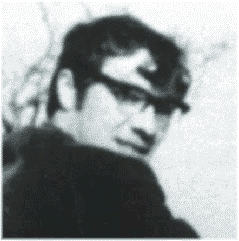
Doreen Valiente met Cochrane in 1964. She’d been exploring different strands of Witchcraft since breaking from Gardner’s coven in 1957. According to her own account she was quite impressed with his charisma as well as his preference for outdoor rituals and staying out the public eye (both of which were quite different from her experience in Gardner’s coven). From these accounts, you get the sense that Valiente had found a style of Witchcraft that spoke to her on a deeper level. And so, on Halloween night of 1964, she was initiated into Cochrane’s coven.
However, despite her satisfaction with Cochrane’s tradition, she quickly became displeased with Cochrane as a man. Valiente was skeptical about his claims about his family’s Witchcraft lineage as well as growing annoyed with his unrelenting disdain for Gardner. This came to a head when Cochrane called for a “Night of the Long Knives” with the Gardnerians. To which Valiente told him off and shortly thereafter left his coven.
Doreen Valiente is an immensely important figure in the history of modern Witchcraft. There are many reasons for this, one of which that that she could walk the line between the two feuding camps of Witchcraft. She looked at both Gardner’s tradition and Cochrane’s with a critical eye, she took was resonated with her, and she created her own path. She called out the bullshit and then went on her own way.
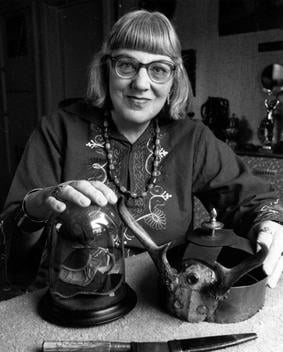
Today, the popularity of Traditional Witchcraft is growing exponentially. Thanks to publishers like Troy Books and Three Hands Press (not to mention the internet), information on the topic is more accessible than ever. More and more people are seeking out Witchcraft paths that are rooted in history and folklore, inspired by writers such as Gemma Gary, Michael Howard, and Nigel Pearson. Additionally, there now exist many specific traditions including the Sabbatic Craft of Andrew Chumbley and the continuance of Robert Cochrane’s tradition (currently led by Magistra Shani Oates).
Interestingly, the same dissension between those identity as Wiccan and those who identify as Traditional Witches still remains, mostly taking place in the online sphere. As in the past, these arguments typically revolve around the contentious topic of ‘authenticity’ of both groups. There are several reasons that these fights happen ranging from insecurity within one’s own path to misinformation or lack of understanding. But if we take a step back and look at the wider historical context (as covered here), it becomes clear that these arguments are largely unfounded.
First, let’s consider that Wicca came to light in the early 1950’s. Prior to this this, Gardner claimed to have been initiated into an existing coven and to have received their fragmentary ritual material. He then, in turn, bolstered that material with pieces borrowed from ceremonial and folk magic as well as from sources such as Margaret Murray, Aleister Crowley, and Charles Godfrey Leland. Essentially, Gardner gained inspiration from the many of the same sources that many Traditional Witches do. For example, it’s undoubtable that Gardner was influenced by the folk magic practices preserved in Williamson’s museum.
Next, consider that Cochrane was, at one point, initiated into Gardner’s tradition. This would have given him access to at least some of the Gardnerian ritual material. It seems unlikely that he would not have gleaned just a bit it inspiration from this source of information. Additionally, when Valiente joined his coven she was likely to have brought in some elements of Wicca.
And so, we can begin to see that there is a multi-directional influence between Wicca and Traditional Witchcraft. This makes sense if we think of Traditional Witchcraft and Wicca as two sub-types of Witchcraft, with each of those also breaking down into various sub-sub-types. Perhaps it’s helpful to imagine Witchcraft as a tree, which diverges into two main trunks that in turn have many different branches. Yet, these individual branches and trunks all draw from the same root system.
With this realization and with the calming of our egos, I think we can see that these arguments and fights are pointless. At the end of day, it’s all just Witchcraft and while it’s always good to use critical thinking and debate can be healthy, spending so much time worried about who is more authentic or powerful isn’t. In this manner, I think we can all take a page from Valiente’s book.
….
As I stated in the introduction, this has been a markedly brief look at the history of modern Traditional Witchcraft. Therefore, I recommend that for looking to explore further (which I highly recommend you do), I suggest checking the recommended reading list at the end of this article.
In the next and final, part of this series we will be looking at ways in which one can develop their own Traditional Witchcraft Practice.
Recommended Reading List:
The Robert Cochrane Letters, edited by Michael Howard
The Roebuck in the Thicket, edited by Michael Howard
Modern Wicca, by Michael Howard
Children of Cain, by Michael Howard
Triumph of the Moon, by Ronald Hutton
Cecil Williamson’s Book of Witchcraft, by Steve Patterson
The Rebirth of Witchcraft, by Doreen Valiente

